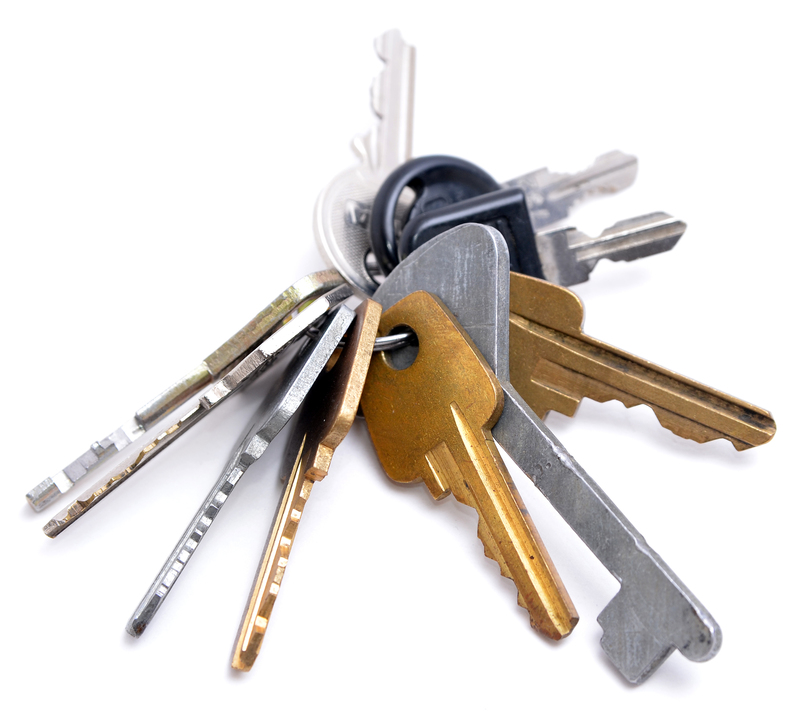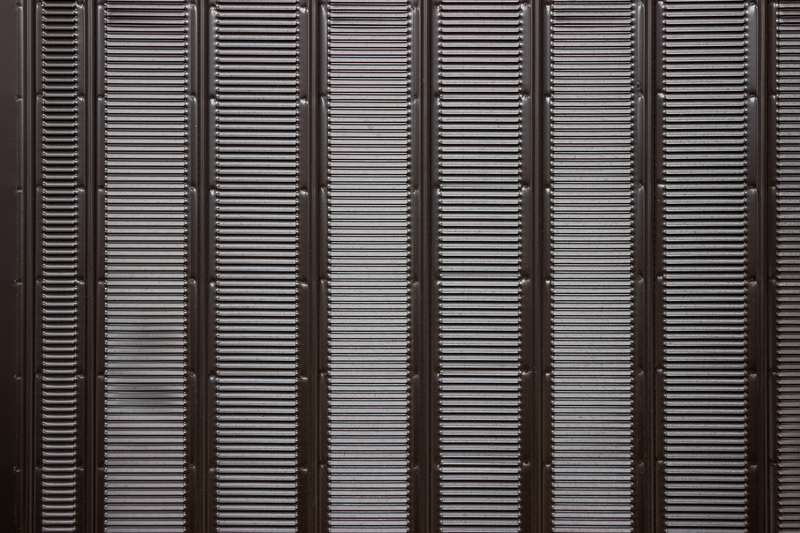Master the Art of Maintaining a Mold-Free Bathroom Space
Posted on 03/06/2025
Master the Art of Maintaining a Mold-Free Bathroom Space
Are you tired of battling stubborn bathroom mold? A mold-free bathroom isn't just about a spotless look--it's vital for your health and home. Mold thrives in damp, humid environments, making bathrooms a common target. This optimized guide reveals how to master the art of maintaining a mold-free bathroom space with step-by-step strategies, science-backed prevention methods, and top cleaning solutions.
Understanding Bathroom Mold: Why Is It So Common?
Bathrooms provide the perfect environment for mold: high humidity, frequent water exposure, and poor air circulation. Spores land on moist surfaces and can multiply within 24-48 hours. Knowing what causes bathroom mold is the cornerstone to effective prevention.
Common Types of Bathroom Mold
- Cladosporium: Greenish-brown or black, commonly grows on shower grout and walls.
- Aspergillus: Yellow-green, found in damp corners and ceilings.
- Stachybotrys chartarum (Black mold): A notorious toxic mold, appears slimy and dark.
Mold isn't just unsightly--it can trigger allergies, respiratory issues, and worsen asthma. Below, learn to wage war on mold and win back your fresh, healthy bathroom space.

Top Strategies to Prevent Mold Growth in Your Bathroom
Consistent and proactive bathroom maintenance is the key to staying mold-free. Below are the most effective and practical strategies to prevent mold in bathrooms of any size.
Control Moisture and Humidity Levels
- Ventilate: Run an exhaust fan during and after showers for at least 20-30 minutes. If you lack ventilation, consider installing a fan or frequently opening windows.
- Dry wet surfaces: Use a squeegee or towel to wipe down tiles, tubs, and glass doors after each use. This quickly reduces the surface moisture that mold loves.
- Reduce humidity: Use a portable dehumidifier, especially in bathrooms without windows. Keep humidity levels below 50% for best results.
Repair Leaks Immediately
- Fix leaky faucets, pipes, or toilet bases promptly to prevent hidden water damage behind walls or under flooring.
- Check for signs of water stains, peeling paint, or musty odors--all indicators of excess moisture.
Choose Mold-Resistant Materials
- Install mold-resistant drywall, paints, and caulks, especially in new renovations or remodels.
- Use vitreous tile or sealed surfaces that repel water and discourage mold growth.
- Replace porous materials, like fabric shower curtains and rugs, with vinyl or quick-drying alternatives.
Essential Cleaning Habits for a Mold-Free Bathroom Space
Consistent cleaning is the backbone of bathroom mold prevention. Adopting a dedicated routine not only keeps your bathroom looking great, but also safeguards your health.
Weekly Mold Prevention Checklist
- Scrub grout and tile: Use a bathroom-safe cleaner and stiff brush to remove soap scum and mold spores.
- Clean all surfaces: Wipe down sinks, countertops, and backsplashes, paying attention to corners and crevices.
- Wash bath mats and shower curtains: Launder mats weekly and shower curtains monthly; use a diluted vinegar spray on non-washable curtains.
- Dry all wet towels: Hang towels flat or spaced apart to dry completely between uses.
Spot-Clean Problem Areas
- Examine caulk lines around tubs and sinks--replace cracked or missing caulk.
- Check ceilings and corners for speckled spots; clean immediately before mold spreads.
Use Smart Cleaning Solutions
Commercial mold removers can be harsh. For safer alternatives:
- Distilled white vinegar: Kills 82% of mold species. Spray undiluted vinegar onto surfaces, let sit for at least 60 minutes, then rinse.
- Baking soda: Mix 1/4 tablespoon baking soda with 2 cups water. Spray, scrub, and rinse to remove light stains and odors.
- Hydrogen peroxide (3%): Apply directly onto mold; let foam for up to 10 minutes; scrub and rinse.
- Tea tree oil: Natural antifungal. Mix 1 teaspoon tea tree oil with 1 cup water, spray, and don't rinse.
For persistent or recurring mold, consider a professional deep cleaning.
Smart Design Tactics to Keep Your Bathroom Mold-Free
Your bathroom's design can either attract mold or help keep it away for good.
Add or Upgrade Ventilation
- Install an exhaust fan: Opt for a high-CFM (cubic feet per minute) fan for large bathrooms. Include a timer or humidity-sensing switch for energy efficiency.
- Open windows when showering: Even a small window helps equalize humidity.
- Airflow matters: Leave shower doors or curtains partially open after use to help air circulate and dry wet spaces.
Optimize Natural and Artificial Lighting
- Bright spaces discourage mold growth. Consider adding skylights or using LED lighting to brighten shadowy corners.
- Use blinds or frosted glass instead of heavy curtains for privacy without trapping moisture.
Seal and Waterproof Surfaces
- Apply grout sealer every 6-12 months to shield lines from moisture.
- Use silicone caulk--a mold-resistant choice--around tubs, showers, and basins.
- Periodically check tiles for cracks or missing sealant; repair promptly.
Hidden Hotspots: Where Mold Loves to Hide
Even the cleanest bathrooms can have hidden mold colonies. Inspect these common but overlooked areas regularly:
- Behind or under the toilet tank
- Inside under-sink cabinets and plumbing fixtures
- Underneath bath mats and at the base of shower doors
- In ventilation fan ducts
- Ceiling corners, especially with poor insulation
- On the backside of wallpaper or painted panels
Shine a flashlight to reveal sneaky spots and eliminate minor mold before it spreads.
What to Do If You Find Mold: Safe Removal Steps
Mold infestations require immediate attention. Here's a step-by-step guide to safely remove and prevent regrowth:
- Wear protective gear: Put on gloves, goggles, and a face mask to prevent direct contact or inhalation.
- Ventilate: Open a window and keep the fan running during cleanup.
- Remove surface mold: Wipe hard surfaces with a mold-killing solution (like vinegar or a commercial product).
- Treat porous or absorbent materials: If mold penetrates drywall, ceiling panels, or insulation, these materials may require replacement to fully eradicate spores.
- Dispose of contaminated materials: Seal materials in bags and remove them from your home.
- Dry the area thoroughly: Use fans or dehumidifiers to ensure no residual moisture remains.
- Monitor for recurrence: Watch for ongoing leaks or humidity problems to prevent further outbreaks.
For large or toxic mold problems (over 10 square feet, or involving Stachybotrys/Black mold), we strongly recommend hiring professional remediation services.
Solving Frequent Bathroom Mold Myths
There's a lot of misinformation about keeping bathrooms mold-free. Let's clarify the facts:
- Myth: Bleach is always the best answer.
Fact: Bleach kills surface mold only. Porous materials may hide unseen spores--consider deeper cleaning or removal. - Myth: Ventilation fans are optional.
Fact: Without airflow, rooms stay damp, fueling mold growth even on clean surfaces. - Myth: "I don't see any mold, so I'm safe."
Fact: Mold often starts in hidden corners, inside walls, or under fixtures.
Frequently Asked Questions About Bathroom Mold Prevention
What keeps mold from forming in bathrooms?
The best defense is combining low humidity, regular cleaning, and prompt repair of water leaks. Keep surfaces dry and well-ventilated for a lasting mold-free bathroom.
Are natural cleaners as effective as chemicals?
In most cases, yes--vinegar, baking soda, and hydrogen peroxide are excellent at killing bathroom mold for regular maintenance.
Should I replace all my bathroom materials if I've had a mold outbreak?
Not necessarily. Non-porous surfaces can be thoroughly cleaned, but severely infected porous materials may need replacement to keep your bathroom space mold-free.
How often should I clean my bathroom to keep mold away?
At least once a week, combined with daily moisture checks, especially after showers or baths.
Is bathroom mold dangerous?
Bathroom mold endangers indoor air quality and can trigger allergies, asthma, or infections in sensitive individuals. Persistent black mold requires professional attention.

Pro Tips for a Mold-Free Bathroom Eternally
- Run your bathroom fan 20-30 minutes after baking or showering.
- Keep shower doors or curtains open to deter condensation.
- Check plumbing fixtures regularly for slow leaks.
- Upgrade to mold-resistant materials during remodels.
- Avoid carpet or heavy fabric in bathrooms.
- Stay vigilant for musty odors--your nose detects mold long before your eyes do!
Conclusion: Take Command of Your Bathroom's Health and Safety
Mastering the art of maintaining a mold-free bathroom space is easier than you think--with consistent, informed care. Reduce moisture, clean frequently, and use effective ventilation systems. Mold-free bathrooms safeguard your family's wellbeing, increase your home's value, and keep your oasis as beautiful as it is functional.
Put a stop to bathroom mold for good: start with today's simple tips, and enjoy a fresh, healthy, and sparkling bathroom every day!





